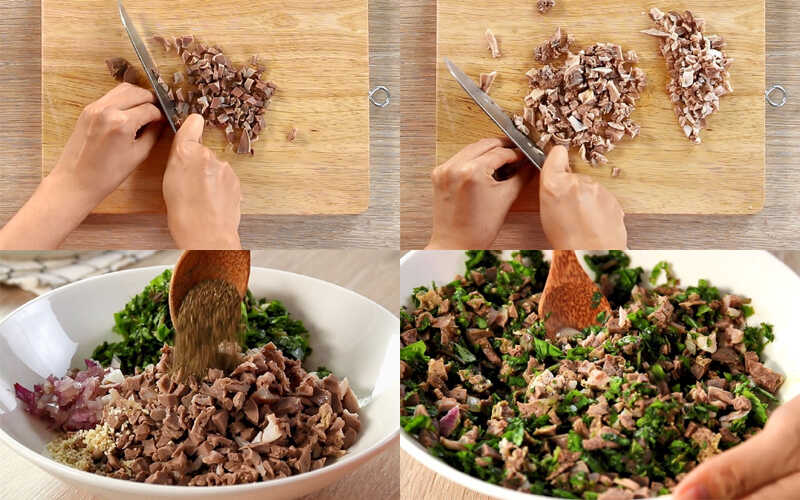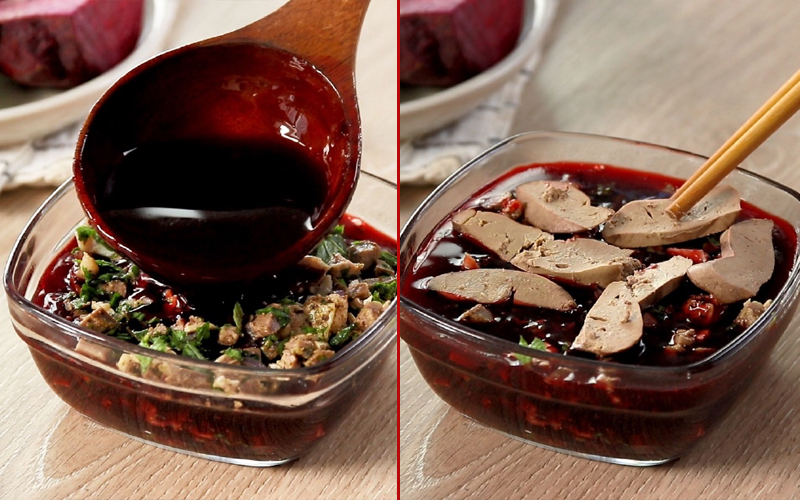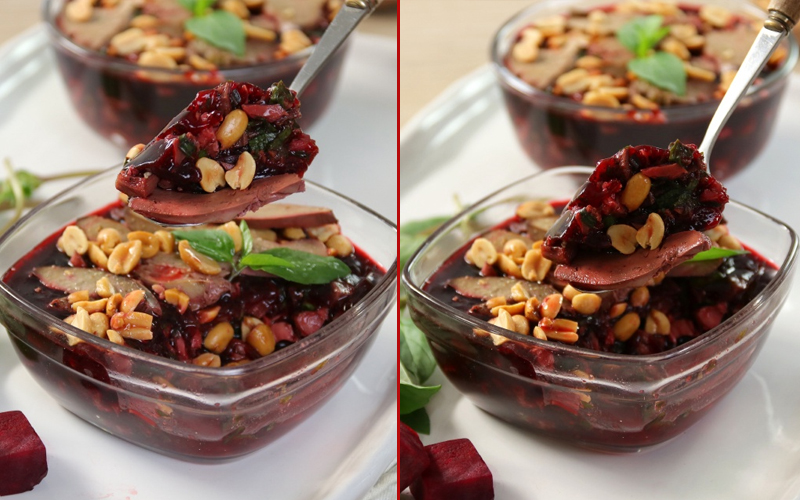Tiết canh is a popular Vietnamese dish made with fresh animal blood as the main ingredient, mixed with gan (liver), long (intestines), and other offal, and then coagulated. While it is a delicacy, food safety is always a concern. Learn how to make a delicious and nutritious alternative using củ dền (beetroot) with the recipe below.
Preparation time: 30 minutes
Serves: 4 people
1 Ingredients for Beetroot Tiết Canh
- 400g beetroot
- 100g duck liver
- 300g duck intestines
- 300g duck neck
- 50g roasted peanuts
- Spring onions, coriander, and bird’s eye chilies
- Seasonings: Fish sauce, sugar, and salt
2 How to Make Beetroot Tiết Canh
Step 1: Prepare the Intestines and Neck
 Preparing the intestines and neck
Preparing the intestines and neck
After purchasing, thoroughly rinse the duck intestines and neck under running water. Then, boil them with a little ginger to neutralize the distinctive duck odor, which many find unpleasant.
Slice the liver thinly and dice the neck and intestines into small cubes.
In a bowl, combine the offal with 20g of finely chopped rau quế (Vietnamese coriander), 1 teaspoon of seasoning powder, 1 teaspoon of pepper, and 1 bulb of grilled shallot. Mix well.
Step 2: Make the Beetroot “Blood”
 Making the beetroot “blood”
Making the beetroot “blood”
Peel and chop the beetroot into small pieces for easier blending. Blend the beetroot with 600ml of water and ½ teaspoon of salt.
After blending, strain the mixture to separate the pulp from the liquid. Boil the beetroot liquid and add 2 tablespoons of fish sauce. Dissolve 30g of bột sương sáo (grass jelly powder) in 30ml of water and stir it into the beetroot liquid. Turn off the heat when it boils, and let it cool down.
Step 3: Finalize the Dish
 Finalizing the dish
Finalizing the dish
Once you have the “blood,” put the offal mixture from Step 1 into small bowls. Then, pour the beetroot “blood” on top and garnish with a few slices of liver. Refrigerate to let the “blood” coagulate.
When the “blood” has coagulated, sprinkle crushed peanuts and pepper on top. Add a squeeze of lime, and serve with Vietnamese coriander and spring onion.
3 The Finished Product
 Beetroot tiết canh
Beetroot tiết canh
The finished beetroot tiết canh looks almost identical to the traditional version. Taste-wise, it is said to be 95% similar to the original dish. This alternative is not only delicious but also safer and more hygienic.
If you’re a fan of tiết canh, don’t miss out on this recipe! Give it a try, and we guarantee your family will love it.
The Perfect Pork: How to Boil Meat Without the Toxins.
“Washing raw meat is a controversial practice. When hot water is applied to unwashed meat, the outer layers of muscle fibers contract, trapping any impurities within. This results in a potentially harmful absorption of contaminants back into the meat. Therefore, it is always advisable to thoroughly clean meat prior to cooking to ensure the meat’s surface doesn’t reabsorb any unwanted elements.”



































